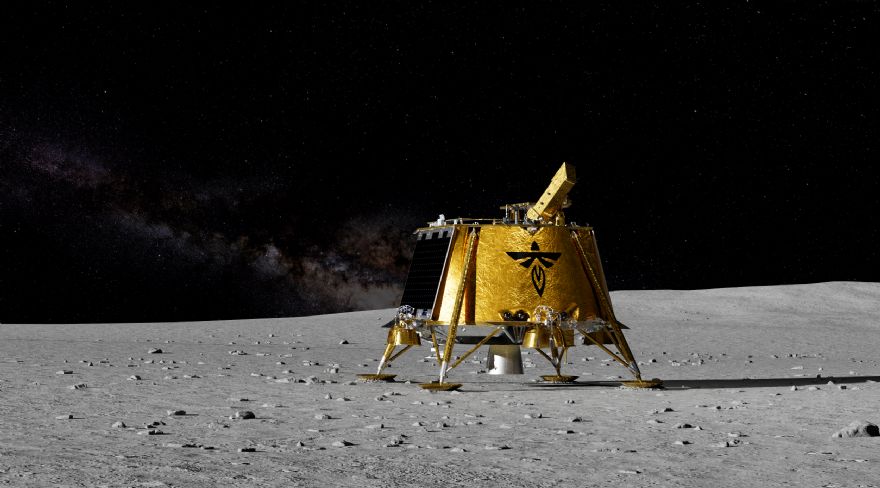 Rendering of Blue Ghost lunar lander on the Moon. Photo: FireflyFirefly Aerospace
Rendering of Blue Ghost lunar lander on the Moon. Photo: FireflyFirefly Aerospace, a leader in end-to-end responsive space services, yesterday announced its Blue Ghost lunar lander softly touched down on the Moon’s surface in an ‘upright, stable configuration’ on the company’s first attempt. As part of NASA’s Commercial Lunar Payload Services (CLPS) initiative, Firefly’s Blue Ghost Mission 1, named ‘Ghost Riders in the Sky’, sets the tone for the future of exploration across cis-lunar space as the first commercial company in history to achieve a fully successful soft-landing on the Moon.
Jason Kim, CEO of Firefly Aerospace, said: “Firefly is literally and figuratively over the Moon. Our Blue Ghost lunar lander now has a permanent home on the lunar surface with 10 NASA payloads and a plaque with every Firefly employee’s name. This bold, unstoppable team has proven we are well equipped to deliver reliable, affordable access to the Moon, and we won’t stop there. With annual lunar missions, Firefly is paving the way for a lasting lunar presence that will help unlock access to the rest of the solar system for our nation, our partners, and the world.”
Carrying 10 NASA instruments, Blue Ghost completed a precision landing in Mare Crisium and touched down within its 100m landing target next to a volcanic feature called Mons Latreille. Blue Ghost’s shock-absorbing legs stabilised the lander as it touched down and inertial readings confirmed the lander is upright and in a stable configuration. Following touchdown, Firefly is successfully commanding and communicating with the lander from the company’s Mission Operations Center in Cedar Park, Texas.
Blue Ghost will now begin its surface operations and support several NASA science and technology demonstrations over the next 14 days – equivalent to a full lunar day. The surface operations include lunar sub-surface drilling, sample collection, X-ray imaging, and dust mitigation experiments. On March 14, Firefly expects to capture high-definition imagery of a total eclipse when the Earth blocks the sun above the Moon’s horizon. On March 16, Blue Ghost will then capture the lunar sunset, providing data on how lunar dust levitates due to solar influences and creates a lunar horizon glow first documented by Eugene Cernan on Apollo 17. Following the sunset, Blue Ghost will operate several hours into the lunar night and continue to capture imagery that observes how levitating dust behaviour changes after the sunset.
Shea Ferring, chief technology officer at Firefly Aerospace, said: “With the hardest part behind us, Firefly looks forward to completing more than 14 days of surface operations, again raising the bar for commercial cis-lunar capabilities. Just through transit to the Moon, Firefly’s mission has already delivered the most science data to date for the NASA CLPS initiative. CLPS has played a key role in Firefly’s evolution from a rocket company to a provider of launch, lunar, and on-orbit services from LEO to cis-lunar and beyond. We want to thank NASA for entrusting in the Firefly team, and we look forward to delivering even more science data that supports future human missions to the Moon and Mars.”
Throughout its 45-day journey to the Moon, Blue Ghost travelled more than 2.8 million miles, downlinked more than 27GB of data, and supported several payload science operations. This included signal tracking from the Global Navigation Satellite System at a record-breaking distance with its LuGRE payload, radiation tolerant computing through the Van Allen Belts with its RadPC payload, and measurements of magnetic field changes with its LMS payload.